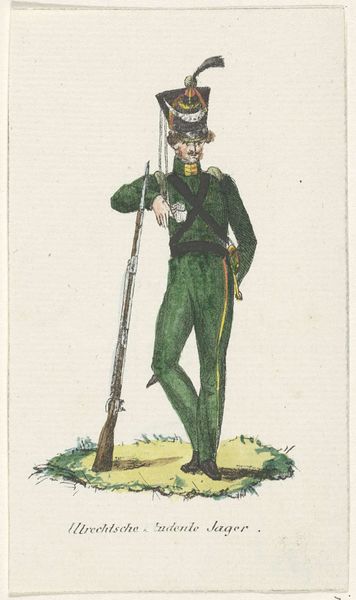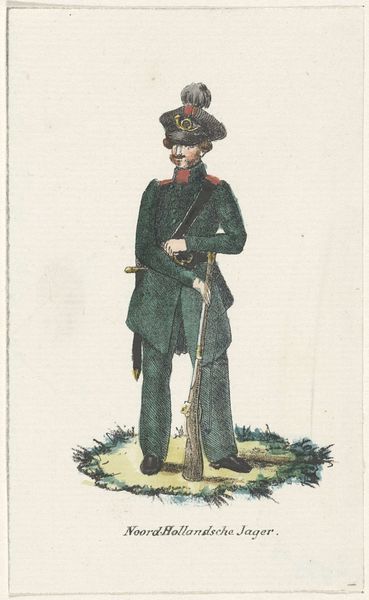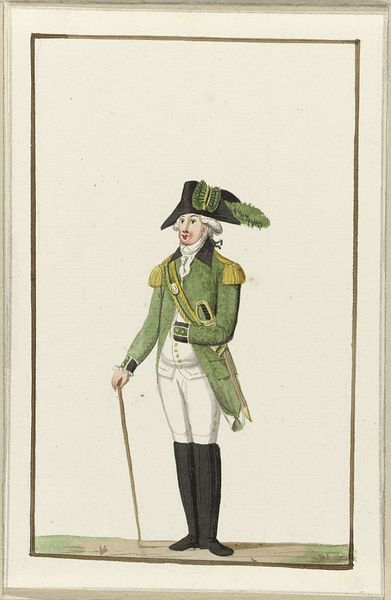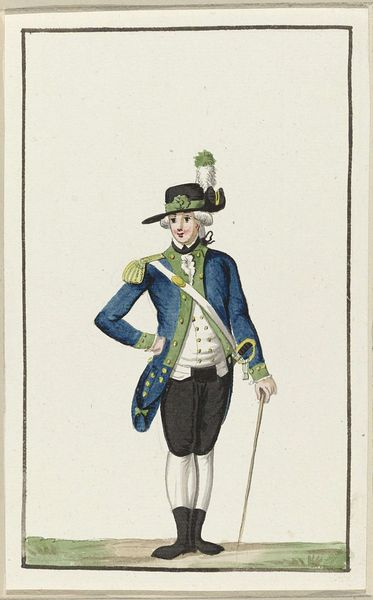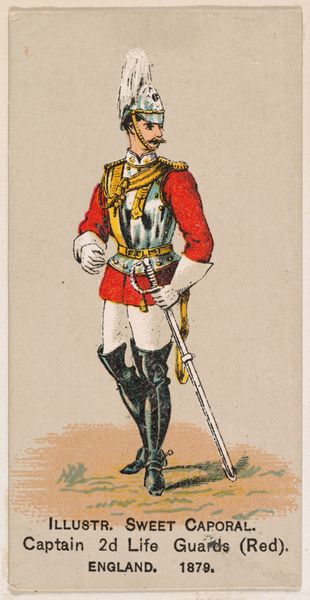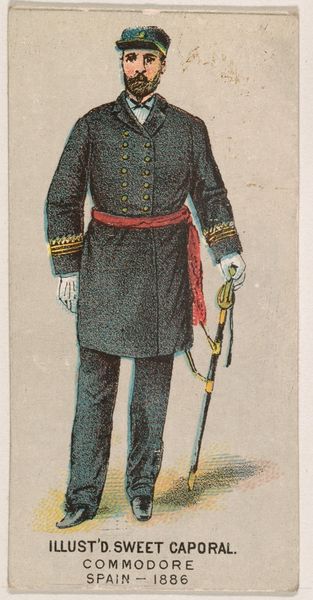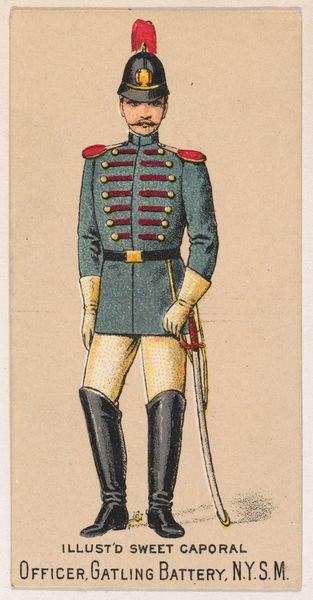
painting, watercolor
#
portrait
#
painting
#
watercolor
#
romanticism
#
costume
#
sketchbook drawing
#
watercolour illustration
#
history-painting
#
academic-art
Dimensions: height 113 mm, width 68 mm
Copyright: Rijks Museum: Open Domain
Willem Charles Magnenat made this print of a Dutch volunteer rifleman, or Jager, using etching and engraving techniques. The image speaks to the transformation of warfare during the Napoleonic era. With it came a shift in social structures in the Netherlands. The Dutch Republic had fallen in 1795, replaced by the French-controlled Batavian Republic, then the Kingdom of Holland, before finally being incorporated into the French Empire. This print likely dates from the period after Napoleon's defeat in 1815 when the Netherlands regained independence as a constitutional monarchy. It suggests how traditional hierarchies were being supplemented by a new kind of military service based on citizen volunteers. The image provides insight into the reshaping of Dutch national identity in the wake of French occupation. Military uniforms and regalia, as documented in prints such as this, helped construct that identity, and we can research the history of those uniforms through period military records. What did it mean to be Dutch at this time? The answers are contingent on these kinds of social and institutional contexts.
Comments
No comments
Be the first to comment and join the conversation on the ultimate creative platform.
